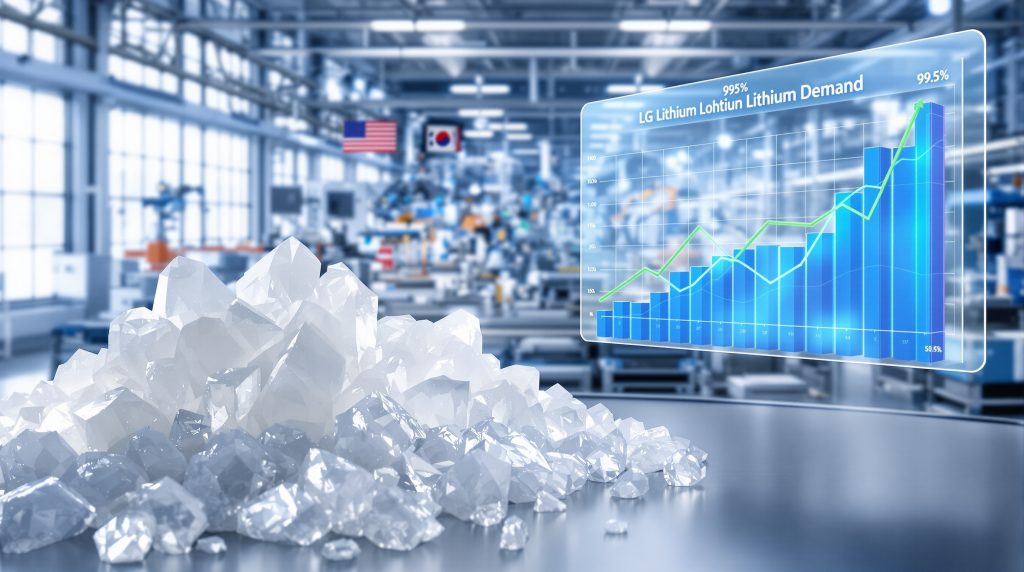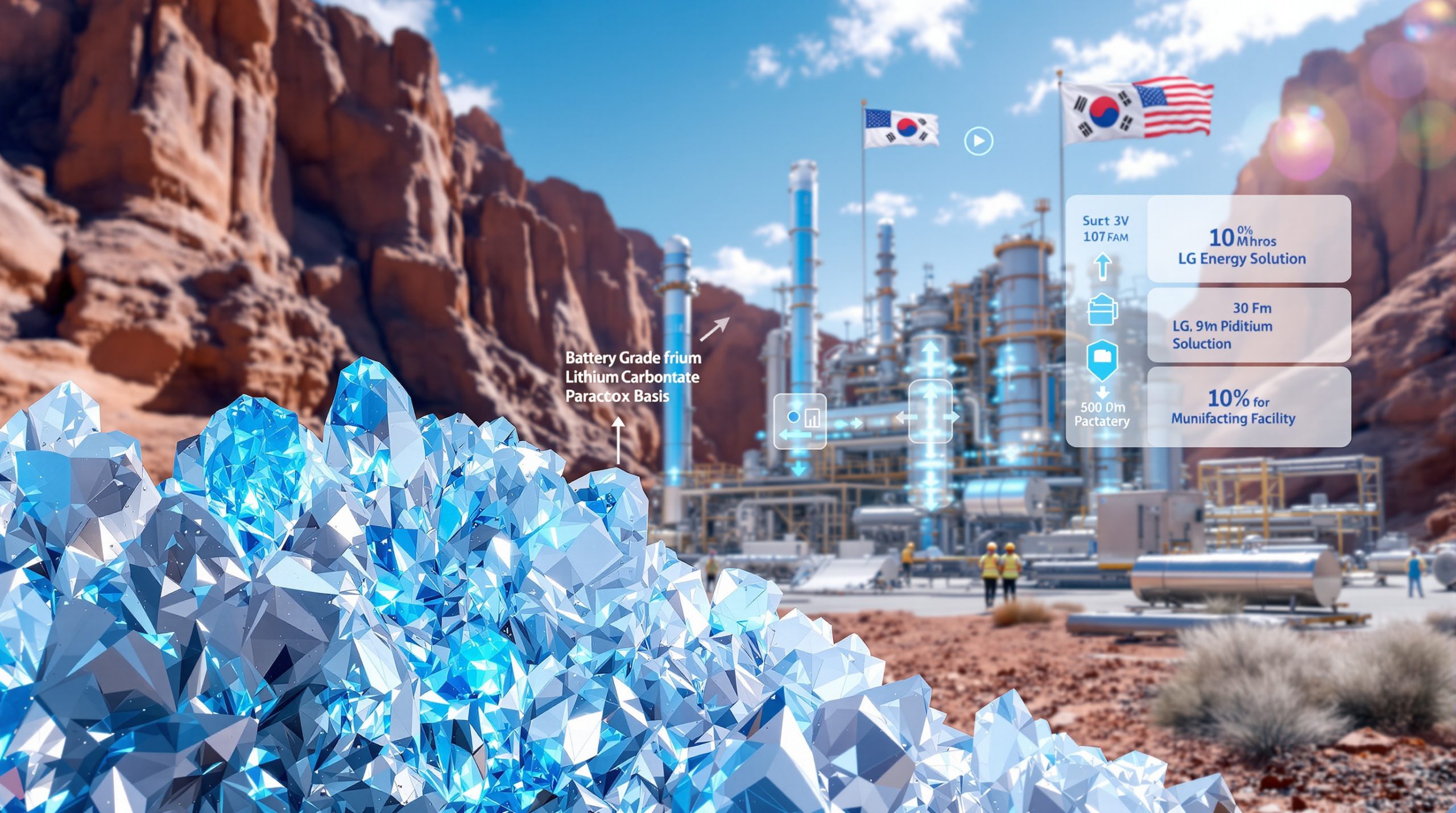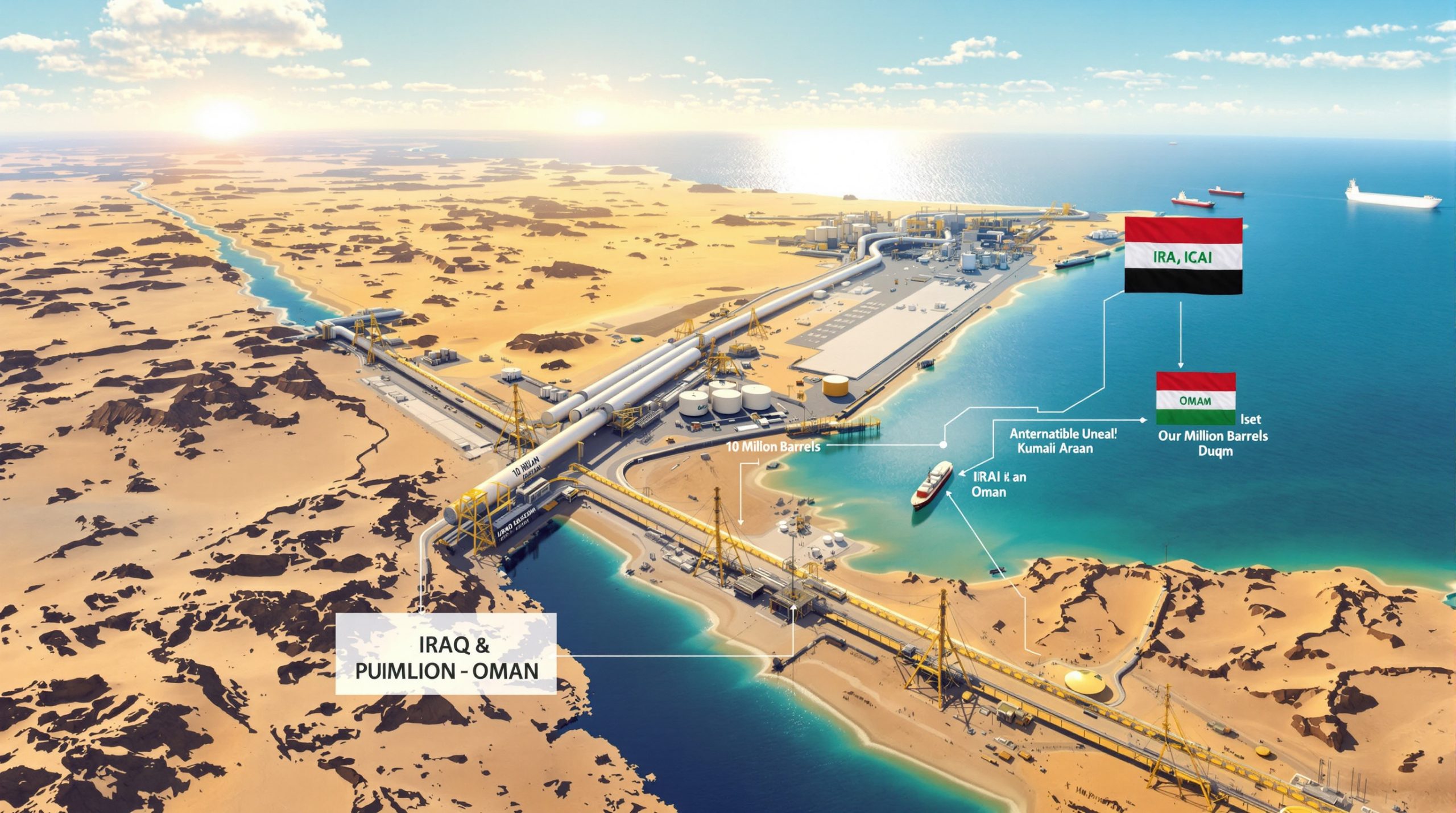Understanding Offtake Agreements with LG Energy Solution: Strategic Lithium Supply Partnerships
What Are Lithium Offtake Agreements and Why Do They Matter?
Lithium offtake agreements represent critical contractual arrangements between lithium producers and battery manufacturers that establish the foundation for secure supply chains in the rapidly expanding electric vehicle market. These agreements typically specify volume commitments, delivery timeframes, and quality specifications that both parties must adhere to throughout the contract period.
The strategic importance of these agreements cannot be overstated, particularly in today's evolving battery materials market. For lithium producers, offtake agreements provide revenue certainty that supports project financing and development planning. For battery manufacturers like LG Energy Solution, these contracts secure a reliable supply of critical raw materials needed for production continuity.
A prime example is Anson Resources' recent offtake agreement with LG Energy Solution, which involves 4,000 dry metric tonnes per annum of battery-grade lithium carbonate under an initial five-year term commencing January 2028. This volume represents approximately 40% of Anson's Paradox Basin project's 10,000 tonnes per annum start-up production capacity, demonstrating the substantial commitment often involved in these arrangements.
Definition and Key Components of Lithium Offtake Agreements
Modern lithium offtake agreements typically include several key components that define the business relationship. These include specific volume commitments measured in metric tonnes annually, quality specifications for the lithium product, and delivery timeframes that align with both the producer's development timeline and the battery manufacturer's production needs.
Pricing mechanisms in offtake agreements have evolved from simple fixed-price models to more sophisticated structures that may include market-linked components, price floors and ceilings, and adjustments based on product specifications. Many agreements also incorporate performance guarantees and product qualification processes to ensure consistent quality.
In Anson's case, the agreement with LG Energy Solution represents a definitive offtake arrangement with clearly defined terms rather than a non-binding memorandum of understanding, highlighting the commitment level from both parties.
Strategic Importance in the Battery Supply Chain
Offtake agreements create a foundation of stability in the volatile lithium market. For project developers like Anson Resources, these agreements are "an essential part of the critical path for debt funding at the final investment decision stage," according to CEO Bruce Richardson. This highlights how securing a credible battery manufacturer as a customer significantly enhances a project's bankability.
For battery manufacturers such as LG Energy Solution, diversifying lithium supply sources across multiple producers and regions represents a critical risk management strategy. This is particularly important as geopolitical tensions and resource nationalism have highlighted vulnerabilities in concentrated supply chains.
The strategic timing of these agreements often aligns with key development milestones, as evidenced by Anson's 2028 commencement date, which provides both parties with a realistic timeline for project completion and production ramp-up.
How Do LG Energy Solution's Offtake Agreements Compare to Industry Standards?
LG Energy Solution's Approach to Securing Lithium Supply
LG Energy Solution has established itself as a major player in the North American battery manufacturing landscape with eight facilities currently operating or under construction across the region. This manufacturing footprint includes standalone facilities in Michigan and Arizona, along with five joint venture operations with major automotive manufacturers, creating a diversified customer base that reduces dependency on any single market segment.
This expansive manufacturing presence requires a carefully coordinated supply chain strategy. Rather than relying exclusively on established producers or development-stage projects, LG appears to balance its portfolio across both categories. The agreement with Anson Resources for lithium from the developing Paradox Basin project exemplifies LG's willingness to partner with emerging producers in strategic locations.
LG's approach to agreement structure appears to align with evolving industry standards. The five-year initial term in the Anson agreement reflects a common timeframe that provides sufficient stability while allowing periodic reassessment as market conditions evolve.
Comparative Analysis of Recent Battery Industry Offtake Deals
When examining LG Energy Solution's lithium procurement approach, their partnership with Anson Resources demonstrates several industry trends. The volume commitment of 4,000 tonnes annually represents a significant portion (40%) of Anson's planned production capacity, indicating LG's substantial need for material while still allowing Anson to diversify its customer base.
The focus on North American production sources aligns with broader industry shifts toward regionalized supply chains. As Bruce Richardson of Anson Resources noted, there has been "an unstoppable paradigm shift in the US supply chain for EV battery materials" that has "led to an increased demand for lithium produced in the US, not only to shorten supply chains geographically but also increase US content."
While detailed pricing mechanisms are not publicly disclosed in most agreements, the trend toward hybrid models with market-linked components appears to be gaining industry acceptance as it provides a balance between price certainty and flexibility for both parties.
What Makes the North American Lithium Market Strategically Important?
The Geopolitical Landscape of Battery Materials
The strategic importance of North American lithium production has increased dramatically in recent years as nations and corporations seek to reduce dependency on concentrated supply sources. The traditional lithium supply chain, heavily centered around South American lithium brine opportunities and Australian hard-rock mining with Chinese processing dominance, has come under scrutiny as geopolitical tensions have highlighted vulnerability to disruption.
This recognition has accelerated investment in domestic lithium resources across North America. Projects like Anson Resources' Paradox Basin development in southern Utah represent critical components in this emerging supply network. According to Anson's leadership, these brines potentially contain "one of the largest lithium resources in North America," underscoring the geological potential of previously underdeveloped regions.
The shift toward domestic production has been driven not only by supply security concerns but also by increasing emphasis on transportation logistics. Shorter supply chains reduce carbon footprints while minimizing exposure to shipping disruptions and international trade disputes that have become increasingly common in recent years.
Impact of the Inflation Reduction Act on Lithium Supply Chains
The regulatory landscape has further amplified the importance of North American lithium production, with government policies actively reshaping investment patterns. Bruce Richardson of Anson Resources specifically noted the "unstoppable paradigm shift in the US supply chain for EV battery materials and the key role that Korean battery manufacturers are playing" in this transformation.
This shift in manufacturing investment has been significantly influenced by policy incentives that prioritize domestic content in battery supply chains. The establishment of qualification thresholds for battery components and critical minerals has created a multi-tiered market where materials from certain regions command premium pricing.
The resulting market dynamics have accelerated development timelines for North American projects as battery manufacturers seek to secure compliant material sources. LG Energy Solution's expansive North American manufacturing footprint, including facilities in Michigan, Arizona, and joint ventures with automakers, demonstrates their strategic alignment with these regulatory incentives.
How Do Lithium Producers Benefit from LG Energy Solution Partnerships?
Financing Advantages of Securing Tier-1 Battery Maker Offtake
For lithium project developers, securing an offtake agreement with a globally recognized battery manufacturer like LG Energy Solution provides substantial financing advantages. As Anson Resources' CEO Bruce Richardson explicitly stated, their agreement with LG "is an essential part of the critical path for debt funding at the final investment decision stage."
This statement highlights the practical reality of lithium project development: lenders and investors require revenue certainty before committing capital to these capital-intensive operations. A definitive offtake agreement with specific volume commitments and a defined timeline significantly reduces revenue uncertainty, enhancing project bankability.
Beyond debt financing, these agreements can also positively impact equity valuations. The validation that comes from a tier-1 battery maker's commitment signals to the market that the project has passed rigorous technical and commercial assessment, potentially attracting additional strategic investors seeking exposure to the lithium supply chain.
Case Study: Production Capacity Planning with Guaranteed Buyers
The Anson Resources example demonstrates how lithium producers can optimize production capacity planning when they have guaranteed buyers. Their Paradox Basin project's initial 10,000 tonnes per annum capacity aligns with a phased development approach that reduces upfront capital requirements while establishing operational capabilities.
With LG Energy Solution committed to purchasing 40% of this production capacity (4,000 tonnes annually), Anson can proceed with development plans knowing a significant portion of their output has a guaranteed destination. This predictable demand profile enables more precise production scheduling, resource allocation, and expansion planning.
This arrangement also potentially facilitates technical collaboration between producer and customer. As Anson continues "undertaking exploration and test work of the lithium brine that exists across multiple areas in the Paradox formation," the specific quality requirements of their offtake partner can inform extraction and processing decisions to ensure the final product meets LG's battery-grade specifications.
What Technical Requirements Must Lithium Producers Meet?
Battery-Grade Lithium Specifications and Quality Control
Producing battery-grade lithium refining carbonate, as specified in Anson's agreement with LG Energy Solution, involves meeting exacting technical standards. While specific purity requirements vary by manufacturer, battery-grade lithium carbonate typically requires 99.5% or higher purity, with stringent limits on impurities like sodium, calcium, and magnesium that can negatively impact battery performance.
This level of quality control demands sophisticated processing technology and consistent production protocols. Anson's ongoing exploration and test work across multiple areas in the Paradox formation is designed to ensure they can consistently meet these technical specifications when commercial production begins in 2028.
The qualification process for new lithium sources typically involves extensive testing and validation before a battery manufacturer will commit to commercial-scale purchases. This process verifies not only chemical composition but also physical properties like particle size distribution that affect battery manufacturing processes.
Production Process Considerations for Meeting Battery Standards
Lithium producers must carefully select and optimize production processes to meet battery-grade standards consistently. Anson Resources' collaboration with POSCO Holdings to test direct lithium extraction (DLE) technology at their Green River project exemplifies the industry's move toward more efficient, environmentally sustainable production methods.
DLE technologies represent a significant advancement over traditional evaporation pond methods, potentially offering faster production cycles, reduced environmental footprint, and higher recovery rates. These technologies are particularly well-suited to North American brines that may have different chemical compositions than the South American salars where evaporation methods have traditionally dominated.
The selection of appropriate processing technology must balance multiple factors, including the specific chemistry of the resource, environmental considerations, operational efficiency, and the particular quality specifications required by offtake partners like LG Energy Solution.
How Are Offtake Agreement Prices Determined?
Pricing Mechanism Evolution in Lithium Supply Contracts
The pricing mechanisms in lithium offtake agreements have evolved significantly over the past decade, moving away from fixed pricing toward more sophisticated structures that balance stability with market responsiveness. While specific pricing terms are typically confidential, industry trends suggest a growing preference for hybrid models that incorporate both fixed and variable components.
These hybrid structures often include price floors that protect producers against market downturns while providing caps that limit buyer exposure during price spikes. The inclusion of regional premiums has become increasingly common, particularly for materials that meet specific regulatory requirements or sustainability criteria.
The development of more transparent market benchmarks has supported this evolution, providing reference points that both parties can agree represent fair market value. These mechanisms reduce the negotiation burden while allowing automatic adjustments as market conditions change throughout the agreement term.
Market Benchmarks and Reference Prices in Contract Structures
Contract structures increasingly reference third-party price assessments from specialized information providers that track lithium markets. These benchmark prices may differentiate between regions, reflecting the premium that battery-grade lithium carbonate from North American sources like Anson's Paradox Basin might command compared to material from other regions.
The timing of price adjustments represents another critical element in contract structures, with provisions determining how frequently prices recalibrate to market conditions. Shorter adjustment periods increase market responsiveness but reduce price certainty, creating a negotiation point that balances the interests of both producer and customer.
For projects like Anson's Paradox Basin, which targets production commencement in 2028, pricing mechanisms must also account for potential market evolution between contract signing and first delivery. This often involves establishing initial pricing methodologies with provisions for review as the production date approaches.
What Challenges Do Lithium Producers Face in Meeting Offtake Obligations?
Production Ramp-Up Risks and Mitigation Strategies
The timeline between offtake agreement signing and production commencement creates significant technical and operational challenges for lithium producers. Anson Resources' agreement specifies a January 2028 start date, providing a development window to address the numerous challenges inherent in bringing a new lithium operation online.
These challenges typically include resource confirmation, process optimization, equipment procurement, and construction management. The lithium industry has seen numerous examples of projects experiencing delays or quality issues during ramp-up, highlighting the importance of realistic timeline projections and contingency planning.
Mitigation strategies often include phased development approaches, pilot plant operations to verify processing methods, and collaborative relationships with technology providers. Anson's collaboration with POSCO Holdings on direct lithium extraction technology demonstrates this strategic approach, leveraging external expertise to reduce technology risk.
Contract Performance Guarantees and Consequences
Offtake agreements typically include provisions addressing potential performance shortfalls by either party. While specific terms remain confidential, industry standards suggest these agreements generally include volume flexibility provisions that recognize the realities of production ramp-up without undermining the fundamental supply commitment.
Quality specification compliance represents another critical performance area, with agreements typically outlining testing methodologies, acceptable quality ranges, and remediation processes for non-conforming material. The specificity of these provisions reflects the critical importance of consistent material properties in battery manufacturing.
Force majeure provisions provide protection against truly uncontrollable events, while dispute resolution procedures establish clear processes for addressing disagreements. These contractual safeguards balance providing sufficient security to both parties while recognizing the practical realities of industrial operations.
How Is the Battery Manufacturing Landscape Evolving in North America?
LG Energy Solution's Manufacturing Expansion Strategy
LG Energy Solution has established a significant manufacturing footprint across North America, with eight facilities currently operating or under construction. This network includes standalone facilities in Michigan and Arizona, complemented by five joint venture operations with major automotive manufacturers.
This expansive manufacturing presence reflects LG's strategic commitment to the North American market and its recognition of the importance of regional supply chains. By establishing production capacity in multiple locations, LG creates a more resilient operational network while positioning itself to benefit from regional policy incentives.
The diversity of facility types in LG's portfolio also demonstrates strategic flexibility. Standalone operations provide independence and diversified customer bases, while joint ventures with automotive manufacturers secure dedicated demand and create deeper integration with key customers.
Competitive Positioning Among Major Battery Manufacturers
The competitive landscape among battery manufacturers in North America continues to evolve rapidly, with multiple global players establishing regional production hubs. LG Energy Solution's eight facilities represent one of the most extensive manufacturing networks in the region, creating scale advantages while supporting diverse customer relationships.
This manufacturing expansion requires parallel development of raw material supply chains, explaining LG's interest in securing North American lithium sources like Anson's Paradox Basin project. The regional alignment of battery production and lithium supply reduces logistical complexity while supporting compliance with origin-specific regulatory requirements.
Different manufacturers have adopted varying approaches to technology diversification and vertical integration. LG's strategy appears to balance technology flexibility with sufficient vertical integration to secure critical material supplies, as evidenced by their willingness to establish long-term offtake relationships with emerging producers.
What Future Trends Will Shape Lithium Offtake Agreements?
Evolving Contract Structures and Terms
Future lithium offtake agreements will likely incorporate increasingly sophisticated structures that reflect the maturing market and evolving priorities of both producers and consumers. These may include more nuanced sustainability requirements, expanded traceability provisions, and more complex pricing mechanisms that account for multiple value factors beyond basic chemical composition.
The Anson-LG agreement, with its five-year initial term commencing in 2028, exemplifies the trend toward contracts with defined initial periods and extension provisions. This structure balances the stability of long-term relationships with the flexibility to adapt to changing market conditions over time.
As the industry accumulates more operational experience, performance metrics and quality specifications will likely become more standardized while still allowing customization to meet specific customer requirements. This evolution supports more efficient negotiation processes while maintaining necessary flexibility.
Emerging Lithium Technologies and Their Commercial Implications
Technological innovation continues to reshape lithium production economics and capabilities. Anson Resources' collaboration with POSCO Holdings to test advanced lithium extraction technology at their Green River project exemplifies how emerging technologies are being integrated into development plans for the next generation of lithium operations.
These advanced production methods offer potential advantages in environmental performance, recovery rates, and product consistency—all factors that could influence offtake agreement structures. As these technologies mature, agreements may include more specific provisions addressing the unique characteristics and advantages they provide.
The potential emergence of new lithium resources, such as Anson's theory that Paradox Basin brines contain "one of the largest lithium resources in North America," further influences future agreement structures. Diversification of resource types and locations creates new opportunities for supply chain optimization while introducing different technical and operational considerations for offtake partners.
How Can Investors Evaluate Offtake Agreements?
Key Assessment Criteria for Offtake Quality
Investors evaluating lithium projects should carefully assess several key aspects of offtake agreements to determine their value in supporting project development and long-term success. The distinction between definitive agreements and non-binding memoranda of understanding represents a critical first consideration—Anson's "definitive offtake agreement" with LG Energy Solution indicates a higher level of commitment than preliminary arrangements.
Volume commitments relative to planned production capacity provide insight into the degree of revenue certainty the agreement provides. Anson's agreement covering 40% of initial production capacity suggests a balanced approach that secures significant base demand while maintaining flexibility to diversify customers or capture spot market opportunities.
Counterparty credibility represents another essential evaluation criterion. LG Energy Solution's position as a global leader in battery manufacturing with substantial North American operations establishes them as a highly credible offtake partner, enhancing the agreement's value in supporting project financing and development.
Red Flags and Warning Signs in Offtake Announcements
Investors should remain vigilant for potential warning signs when evaluating announced offtake agreements. These include vague volume commitments without specific tonnage figures, undefined agreement durations, and excessive conditionality that could undermine the practical value of the arrangement.
Timeline alignment between project development and delivery commitments represents another critical evaluation point. Anson's 2028 commencement date provides a realistic development window for their Paradox Basin project, contrasting with announcements that promise unrealistically rapid transitions from agreement to delivery.
The absence of specific quality requirements or qualification processes may also signal potential issues, as battery manufacturers typically maintain rigorous technical standards. The practical value of an offtake agreement depends not only on its commercial terms but also on the producer's ability to consistently meet the required specifications.
Lithium Offtake Agreements: Key Insights for Strategic Supply Chain Management
Strategic lithium offtake agreements like the partnership between Anson Resources and LG Energy Solution demonstrate the critical importance of secured supply relationships in the rapidly evolving battery materials market. These agreements provide lithium producers with the revenue certainty needed to secure project financing while giving battery manufacturers like LG the supply security required to support their expansive North American manufacturing network.
The evolution of these agreements reflects broader industry trends toward greater sophistication in contract structures, increasing emphasis on regional supply chains, and growing integration of technological innovation in production methods. As Bruce Richardson of Anson Resources observed, there has been "an unstoppable paradigm shift in the US supply chain for EV battery materials" that is reshaping investment patterns and development priorities.
For investors evaluating lithium projects, understanding the nuances of offtake agreements provides valuable insight into project viability and potential success. The quality of offtake partners, specificity of agreement terms, and alignment with realistic development timelines all contribute to determining the practical value these arrangements provide in supporting project advancement.
As the battery materials landscape continues to evolve, the strategic importance of these supplier-customer relationships will only increase. Companies that successfully navigate the complex technical, commercial, and operational challenges of establishing and maintaining these partnerships will be well-positioned to thrive in the expanding lithium economy. Furthermore, projects like Thacker Pass lithium production and continuing Australia lithium innovations will likely play crucial roles in reshaping future offtake agreement structures in this rapidly evolving sector.
Want to Capitalise on the Next Major Mineral Discovery?
Discovery Alert's proprietary Discovery IQ model instantly analyses ASX announcements to identify significant mineral discoveries before the broader market reacts. Visit our dedicated discoveries page to see how historic mineral discoveries have yielded exceptional returns for early investors.




